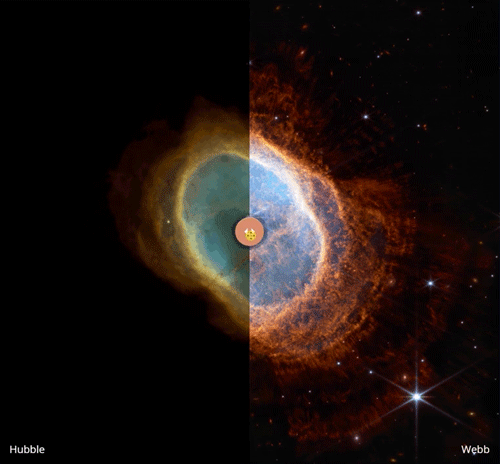Curate, connect, and discover
James Webb Telescope - Blog Posts

Cosmic Cliffs in Carina © JWST
how is everyone not wailing and shouting in the streets everytime a new james webb telescope image comes out how are people not immediately rent asunder by the terrifying beauty of space with every new release

Van Gogh's Starry Night with the first image taken by the James Webb telescope by alpgenart (via astronomy_eye)



Jupiter
Make way for the king of the solar system! 👑
New Webb images of Jupiter highlight the planet’s features, including its turbulent Great Red Spot (shown in white here), in amazing detail. These images were processed by citizen scientist Judy Schmid.
HALLOWEEN
Throughout the COSMOS!
With Halloween just around the corner, NASA has released its latest Galaxy of Horrors posters. Presented in the style of vintage horror movie advertisements. As fun and creative as all three posters are, they're based on real phenomena. 🎃
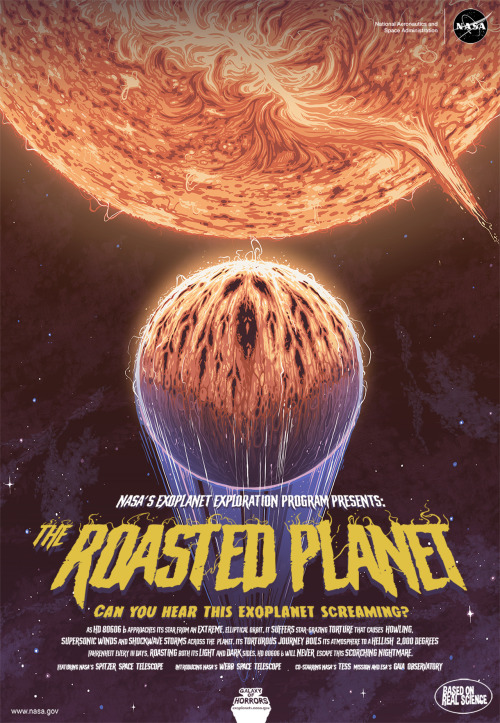
Can you hear this exoplanet screaming?
As HD 80606 b approaches its star from an extreme, elliptical orbit, it suffers star-grazing torture that causes howling, supersonic winds and shockwave storms across the planet. Its torturous journey boils its atmosphere to a hellish 2,000 degrees Fahrenheit every 111 days, roasting both its light and dark sides. HD 80606b will never escape this scorching nightmare.
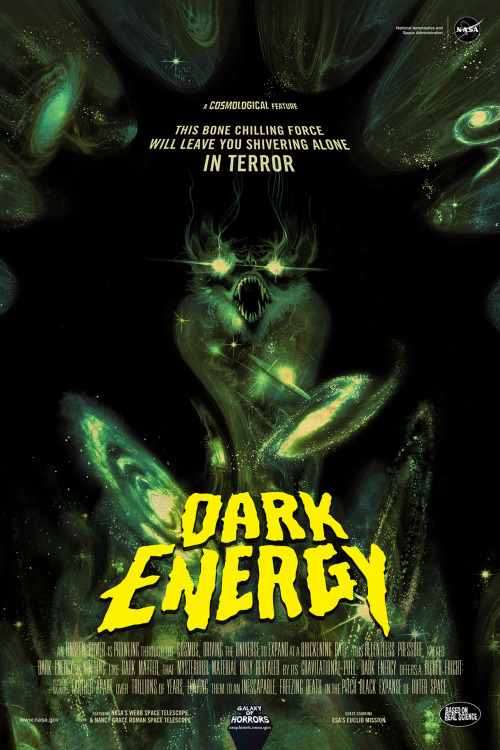
This bone-chilling force will leave you shivering alone in terror!
An unseen power is prowling throughout the cosmos, driving the universe to expand at a quickening rate. This relentless pressure, called dark energy, is nothing like dark matter, that mysterious material only revealed by its gravitational pull. Dark energy offers a bigger fright: pushing galaxies farther apart over trillions of years, leaving the universe to an inescapable, freezing death in the pitch black expanse of outer space.
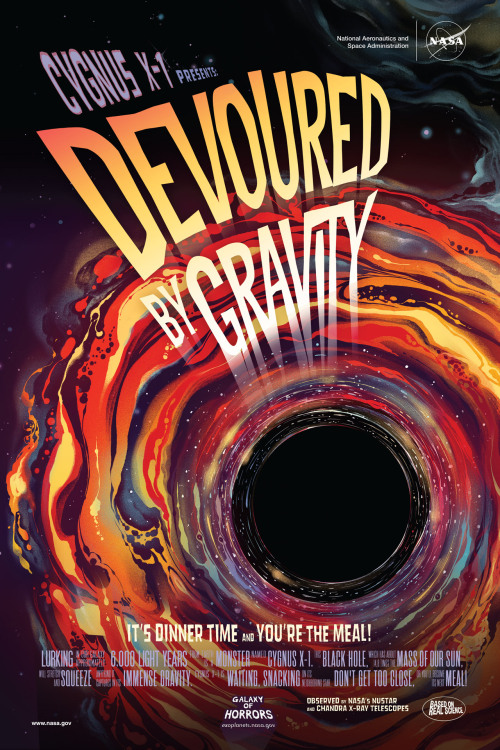
Cygnus X-1 Presents:
It’s Dinner Time and You’re The Meal!
Lurking in our galaxy, approximately 6,000 light-years from Earth, is a monster named CygnusX-1. This black hole, which has about 14.8 times the mass of our Sun, will stretch and squeeze anything it captures in its immense gravity. Cygnus X-1 is waiting, snacking on its neighboring star. Don’t get too close, or you’ll become its next meal!
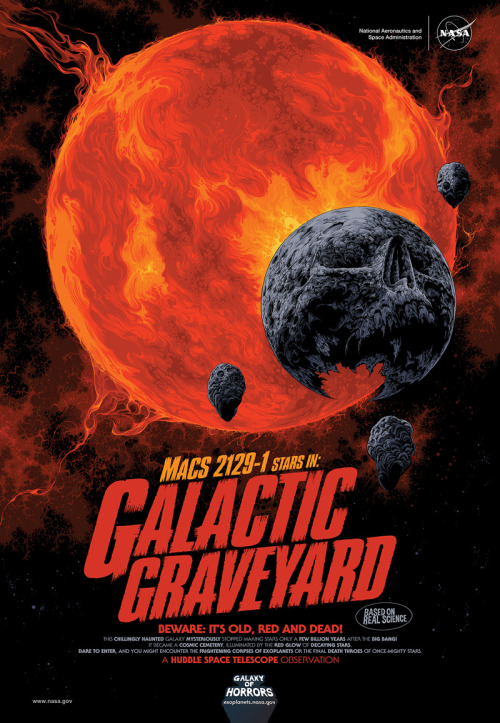
This chillingly haunted galaxy mysteriously stopped making stars only a few billion years after the Big Bang! It became a cosmic cemetery, illuminated by the red glow of decaying stars. Dare to enter, and you might encounter the frightening corpses of exoplanets or the final death throes of once-mighty stars.
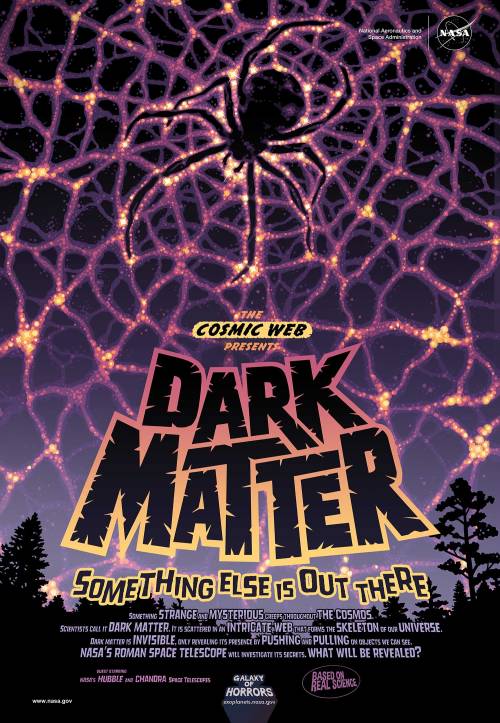
Something strange and mysterious creeps throughout the cosmos. Scientists call it dark matter. It is scattered in an intricate web that forms the skeleton of our universe. Dark matter is invisible, only revealing its presence by pushing and pulling on objects we can see. NASA’s Roman Space Telescope will investigate its secrets. What will be revealed?
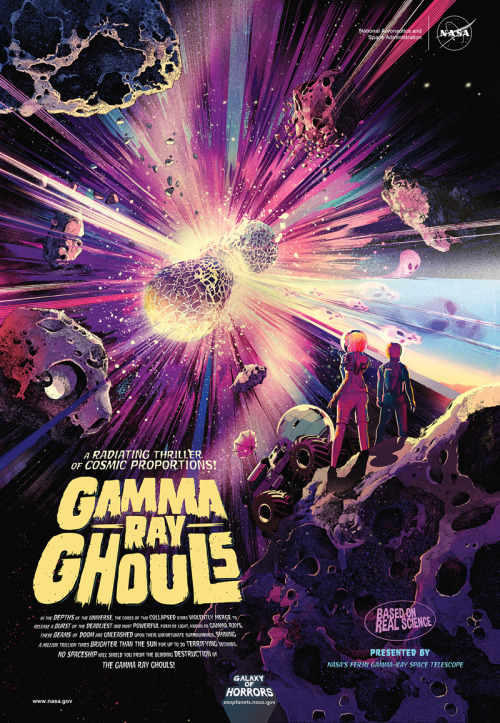
In the depths of the universe, the cores of two collapsed stars violently merge to release a burst of the deadliest and most powerful form of light, known as gamma rays. These beams of doom are unleashed upon their unfortunate surroundings, shining a million trillion times brighter than the Sun for up to 30 terrifying seconds. No spaceship will shield you from the blinding destruction of the gamma ray ghouls!
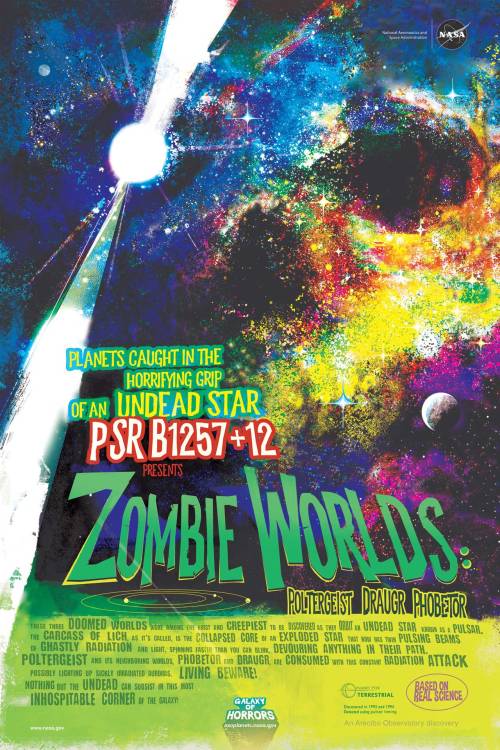
These doomed worlds were among the first and creepiest to be discovered as they orbit an undead star known as a pulsar. Pulsar planets like Poltergeist and its neighboring worlds, Phobetor and Draugr, are consumed with constant radiation from the star’s core. Nothing but the undead can subsist in this most inhospitable corner of the galaxy.
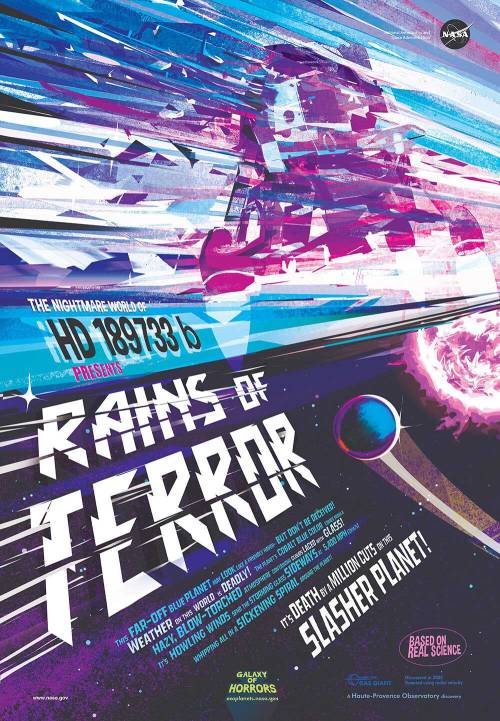
This far-off blue planet may look like a friendly haven – but don’t be deceived! Weather here is deadly. The planet’s cobalt blue color comes from a hazy, blow-torched atmosphere containing clouds laced with glass. Howling winds send the storming glass sideways at 5,400 mph (2km/s), whipping all in a sickening spiral. It’s death by a million cuts on this slasher planet!
The search for another Earth is super cool even if it might never end lol
But like, Aliens.
WANT MORE? GET YOUR HEAD STUCK IN THE STARS AT MY BLOG!
Are We Alone? How NASA Is Trying to Answer This Question.
One of the greatest mysteries that life on Earth holds is, “Are we alone?”

At NASA, we are working hard to answer this question. We’re scouring the universe, hunting down planets that could potentially support life. Thanks to ground-based and space-based telescopes, including Kepler and TESS, we’ve found more than 4,000 planets outside our solar system, which are called exoplanets. Our search for new planets is ongoing — but we’re also trying to identify which of the 4,000 already discovered could be habitable.

Unfortunately, we can’t see any of these planets up close. The closest exoplanet to our solar system orbits the closest star to Earth, Proxima Centauri, which is just over 4 light years away. With today’s technology, it would take a spacecraft 75,000 years to reach this planet, known as Proxima Centauri b.
How do we investigate a planet that we can’t see in detail and can’t get to? How do we figure out if it could support life?
This is where computer models come into play. First we take the information that we DO know about a far-off planet: its size, mass and distance from its star. Scientists can infer these things by watching the light from a star dip as a planet crosses in front of it, or by measuring the gravitational tugging on a star as a planet circles it.
We put these scant physical details into equations that comprise up to a million lines of computer code. The code instructs our Discover supercomputer to use our rules of nature to simulate global climate systems. Discover is made of thousands of computers packed in racks the size of vending machines that hum in a deafening chorus of data crunching. Day and night, they spit out 7 quadrillion calculations per second — and from those calculations, we paint a picture of an alien world.

While modeling work can’t tell us if any exoplanet is habitable or not, it can tell us whether a planet is in the range of candidates to follow up with more intensive observations.

One major goal of simulating climates is to identify the most promising planets to turn to with future technology, like the James Webb Space Telescope, so that scientists can use limited and expensive telescope time most efficiently.

Additionally, these simulations are helping scientists create a catalog of potential chemical signatures that they might detect in the atmospheres of distant worlds. Having such a database to draw from will help them quickly determine the type of planet they’re looking at and decide whether to keep observing or turn their telescopes elsewhere.
Learn more about exoplanet exploration, here.
Make sure to follow us on Tumblr for your regular dose of space: http://nasa.tumblr.com.
I’m so hype for this telescope though
They say it might be able to see back to when the first stars were born - how exciting!
Eat shit Hubble telescope
WANT MORE? GET YOUR HEAD STUCK IN THE STARS AT MY BLOG!

The launch of the James Webb Telescope – the successor of the Hubble Telescope – has been delayed until 2021 but damn it’s going to be awesome.
Aroace Flags Colorpicked from Space Photos
Since my last nebula colorpicked flags post blew up, I figured I do another one but with only the sunset aroace flag (it’s like my favorite flag to colorpick).


















